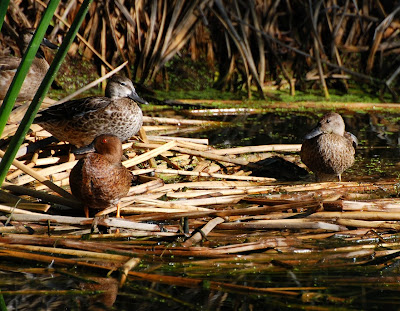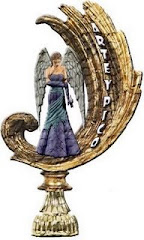 Upper Sabino Canyon 9-19-09
Upper Sabino Canyon 9-19-09
On Thursday, September 17th Jean, Peggy, Pam and I headed into Sabino Canyon for out final IBA survey of the year. Migration is in full swing and we saw over 40 species of birds. I have been participating in the Important Bird Area survey of Sabino Canyon for almost 2 years now and I have never been any farther than Tram Stop 1 where our survey transect begins. Now it is Saturday and Gus and I are meeting our son and his family at Mimi's cafe in Tucson for breakfast.
 G and Xavier on the tram 9-19-09
G and Xavier on the tram 9-19-09
G and his wife, Trish have recently moved to the Tucson area, which puts them much closer to us. It makes it much easier to visit them and spend time with them. I am so excited to show them the wonderful natural areas around Tucson. Gus has never been to Sabino Canyon either, so I propose a trip to Sabino after breakfast. Unfortunately Trish has to work, but G, Xavier, Gus and I drive up to the canyon and purchase our tram tickets. While Sabino Canyon is part of the Coronado National Forest, the tram is run as a separate concession and so costs $8 a ticket beyond the admission to the park. Since we have a National Park pass, all we have to buy is three tickets. Children under 3 are free. This is good since Xavier is soon fast asleep in his daddy's arms.
 Gus on the tram at tram stop 9.
Gus on the tram at tram stop 9.
Though is is quite hot by now we ride the tram to the top of Sabino Canyon. I get excited as we finally pass tram stop 1. From here on out this is all new territory for me. The road winds up the canyon with rocky outcrops everywhere. It crosses several narrow bridges over the meandering creek. Willow, ash, and sycamore trees line the creek banks, along with a few cottonwood tree. Palo Verdes and mesquite cover the canyon slopes with Saguaros standing at attention inbetween. I must admit I thought the canyon would pass into more forested zones. I thought we would eventually reach the pine forests I have seen on Mt. Lemmon. I thought it would be shady and cool the farther we went into the canyon, but though we gain elevation, we remain in the Sonoran desert all the way to the top and it is sunny, bright and hot.
 Looking back down the road 9-19-09
Looking back down the road 9-19-09
Gus is too hot to get out of the tram. Xavier is still asleep in his father's arms. I hop out to snap a few photos and then the driver honks his horn, a signal to those who want to reboard and head back down. We ride back down to tram stop 8 where there is a rest room and better access to the creek. I thought we could take Xavier to the creek edge to play in the water, but he is still fast asleep. As the tram heads back down the road without us we realize it will be at least 30 minutes before we can get back on the next train. It is far too hot to hike with the baby, and so we stand in the shade of a nearby tree. Gus decides to hike down to the next stop, while G and I stand and sweat.
 What hawk is this? 9-19-09
What hawk is this? 9-19-09
Of course, I do have my bins with me and I quickly occupy myself with looking around for birds. Suddenly I notice a large raptor on a branch overhanging the creek. I focus in and try to figure out what species it is, but this is something new to me and I haven't got a clue. I quickly snap a few shots off so I will have something to look at when I get back to my bird books. For now I just look and look and try to take metal notes of what I am seeing. Streaked back, dark feathers, is that an eyeline? What hawk has an eye line? Could it be a goshawk? The streaks make me think it is a juvenile, but a juvenile what? My mind is racing.
 Close up of the mystery hawk 9-19-09
Close up of the mystery hawk 9-19-09
 Poised to pounce 9-19-09
Poised to pounce 9-19-09
Finally the bird turns so I can see its breast. Then is leaps into the crouch of a nearby tree and appears to be eating something, but my view is obstructed by foliage and after awhile I turn away. I think it is gone, but a look back at the creek shows the hawk in the water! In the water?
 Hawk with frog (click to enlarge) 9-19-09
Hawk with frog (click to enlarge) 9-19-09The only hawk I know of that hunts in the water is an osprey. Could this be a juvenile osprey? What do juvenile osprey look like? Since I don't have my books with me, I will have to look it up when I get back to the car. Meanwhile, I just keep watching and photographing. But it is so hot and I am sweating and excited, the photos are not quite as clear as I would like.
 Juvenile Common Black hawk 9-19-09 at tram stop 8
Juvenile Common Black hawk 9-19-09 at tram stop 8I watch as the hawk jumps up onto the rock with another bit of prey. This time it is a fish I think. It gobbles up the morsel, then...
 ...jumps back into the creek for a bath!
...jumps back into the creek for a bath!By this time Xavier has awakened and the tram is on here to pick us up. We board the tram and find Gus at tram stop 6. He has hiked quite a ways down by himself. After we are back at the car with AC running to cool us off I pull out my bird guide to look the hawk up. I happened to have Kaufman and Sibley's bird guide with me, but it is Sibley's I consult and only then do I learn that this is a juvenile Common Black Hawk and a *Life Bird for me! I had no idea that it was even possible for me to see a common black hawk in Sabino Canyon. Common black hawks are one of the trophy birds that people come to Arizona to see. I thought I would have to go to the San Pedro River or some other more remote canyon to ever get to see one and now, here is one in our own Sabino right at tram stop 8, across the creek from the restrooms!
Though there were other birds in the canyon this morning, I only counted 2 Wilson's warblers, a cactus wren, 3 Bell's vireos and a black-throated sparrow. I was too focused on the hawk. Gus thoroughly enjoyed his walk by himself and G thinks it would be a great place to ride his bike, so I think we will be coming back to upper Sabino once the weather cools off a bit. As for me, we are on break from our IBA surveys for the rest of the year, but we will be back again in January to for our first survey of 2010! Until then, you can scroll down to see my list from Thursday, which includes birds from the survey as well as what I saw on the hike in and back out again. And that's...
Sabino Canyon Bird List:
Location: Sabino Canyon Recreation Area
Observation date: 9/17/09
Notes: IBA survey hike from parking lot on upper sabino road to tram stop one then hike back along the creek trail with Jean, Peggy, and Pam. 63F to 90F. No clouds, no wind. We were seeing green-tailed towhees and sparrows everywhere!
Number of species: 39
Gambel's Quail 3
Turkey Vulture 2
Cooper's Hawk 2 1 in tre near dam, 1 flying below dam.
Mourning Dove 2
Greater Roadrunner 2
Great Horned Owl 1 In willow tree below dam
Broad-billed Hummingbird 8
Black-chinned Hummingbird 6
Anna's Hummingbird 1
Rufous Hummingbird 5
Gila Woodpecker 8
Gray Flycatcher 1
Cordilleran Flycatcher 3
Black Phoebe 1
Bell's Vireo 10
Plumbeous Vireo 1
Verdin 5
Cactus Wren 6
Rock Wren 2
Canyon Wren 3
Ruby-crowned Kinglet 2
Black-tailed Gnatcatcher 1
Curve-billed Thrasher (Western) 5
Phainopepla 1
Yellow Warbler 2
Wilson's Warbler 3
Summer Tanager 4
Green-tailed Towhee 8
Chipping Sparrow 5 by themselves below dam
Brewer's Sparrow 6 in mixed flock
Black-throated Sparrow 1 on the trail back towards the parking lot
Song Sparrow 2
White-crowned Sparrow 4 in a mixed flock of sparrows
Northern Cardinal 3
Black-headed Grosbeak 3
Lazuli Bunting 3
Varied Bunting 1
House Finch 3
Lesser Goldfinch 3
This report was generated automatically by eBird v2(http://ebird.org)
*Life Bird: the first time a birder sees a species of bird. This gets added to their Life List, a list of all species of birds a person has seen.
 Can it be only a month ago that this gopher snake showed up on the same day and scared me for his safety until I was sure it wasn't a rattlesnake? I went to turn off the hose and found this creature coming out of the drainage pipe. I grabbed my grandson and quickly put him safely inside the house, then came back out to see if I needed to call the Fire Department to come relocate the snake. The slender head and mild temperment let me know I and the child were safe. The bulge in the snake's belly led me to believe it had crawled up the pipe and eaten some rodent who had taken refuge in the cool dark tunnel. Alas, not such a good idea for the rodent, but for me, this jeweled beauty did me a favor!
Can it be only a month ago that this gopher snake showed up on the same day and scared me for his safety until I was sure it wasn't a rattlesnake? I went to turn off the hose and found this creature coming out of the drainage pipe. I grabbed my grandson and quickly put him safely inside the house, then came back out to see if I needed to call the Fire Department to come relocate the snake. The slender head and mild temperment let me know I and the child were safe. The bulge in the snake's belly led me to believe it had crawled up the pipe and eaten some rodent who had taken refuge in the cool dark tunnel. Alas, not such a good idea for the rodent, but for me, this jeweled beauty did me a favor! In this month of September a lark sparrow bashed into my picture window. It sat stunned on my patio table, but eventually flew off. I can only hope it lived.
In this month of September a lark sparrow bashed into my picture window. It sat stunned on my patio table, but eventually flew off. I can only hope it lived. On International Turkey Vulture Day this bird flew down to devour the carcass of a snake killed the night before by a vehicle as it crossed the road...
On International Turkey Vulture Day this bird flew down to devour the carcass of a snake killed the night before by a vehicle as it crossed the road... ...and then, as if to drive home the point that I live in a truly wild place, this tarantula walked across the brick patio on evening, as casual as can be.
...and then, as if to drive home the point that I live in a truly wild place, this tarantula walked across the brick patio on evening, as casual as can be.















































